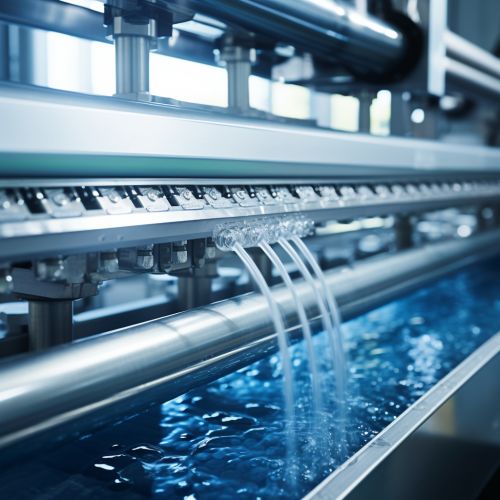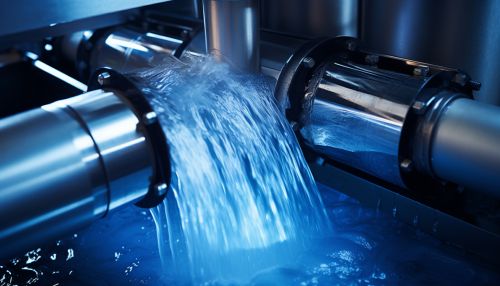Water purification
Introduction
Water purification is the process of removing undesirable chemicals, biological contaminants, suspended solids, and gases from water. The goal is to produce water fit for specific purposes. Most water is purified and disinfected for human consumption (drinking water), but water purification may also be carried out for a variety of other purposes, including medical, pharmacological, chemical, and industrial applications. The methods used include physical processes such as filtration, sedimentation, and distillation; biological processes such as slow sand filters or biologically active carbon; chemical processes such as flocculation and chlorination; and the use of electromagnetic radiation such as ultraviolet light.
Water Sources
Water to be purified may come from a variety of sources. Groundwater from wells, surface water from rivers and streams, and seawater are all common sources of water that may need to be purified. Each source of water has its own unique set of contaminants that may be present, and therefore may require different methods of purification.
Physical Processes
Filtration
Filtration is a physical process used in water purification to remove particles from water by passing it through a porous material. The size of the pores in the filter determines the size of particles that can be removed. Filters can be made of a variety of materials, including paper, fabric, ceramic, and metal.
Sedimentation
Sedimentation is another physical process used in water purification. It involves allowing particles in the water to settle to the bottom of a container or basin. The settled particles, known as sludge, can then be removed, leaving cleaner water behind.
Distillation
Distillation is a process that involves heating water to create steam, and then condensing the steam back into liquid water. This process can remove many types of contaminants, including salts, metals, and certain types of bacteria.
Biological Processes
Slow Sand Filters
Slow sand filters are a type of biological filter used in water purification. They work by allowing water to slowly pass through a bed of sand. As the water moves through the sand, microorganisms living on the sand grains break down organic matter in the water.
Biologically Active Carbon
Biologically active carbon is another type of biological filter used in water purification. It works by adsorbing organic compounds in the water. The carbon is typically activated by heating it in the presence of oxygen, which creates a large surface area for adsorption.
Chemical Processes
Flocculation
Flocculation is a chemical process used in water purification. It involves adding a chemical to the water that causes particles to stick together and form larger particles, known as flocs. The flocs can then be removed from the water by sedimentation or filtration.
Chlorination
Chlorination is another chemical process used in water purification. It involves adding chlorine to the water, which kills bacteria and other microorganisms.
Electromagnetic Radiation
Ultraviolet (UV) light is a type of electromagnetic radiation that can be used in water purification. UV light kills microorganisms by damaging their DNA, which prevents them from reproducing.
See Also


